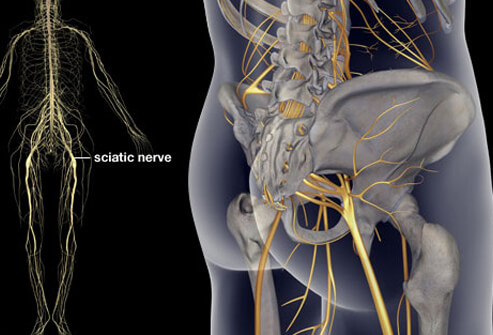Sciatica is a term heard often to explain the pain people feel in or just below their sacro-iliac joints, into the buttocks and particularly down the legs. Although used as a diagnosis, it is really just a symptom of an underlying problem. Most people will feel pain, tingling, numbness and muscle weakness as a result of the compression, stretching and irritation of the sciatic nerve. Recently, researchers conducted a controlled study that compared spinal manipulation (chiropractic care) and surgery for the treatment of sciatica when traditional medical treatment was not effective.
The study was conducted by the National Spine Center in Alberta Canada and published in October of 2010 in the Journal of Manipulative and Physiological Therapeutics. The study involved 40 participants who all had sciatica lasting over 3 months. Each patient received treatment with, but had not responded to, one of the following treatments: pain medications, lifestyle modifications, physical therapy, massage therapy or acupuncture. Each had been referred by their primary care physicians to spinal surgeons who had deemed them appropriate surgery candidates.
Instead of having all the patient proceed with surgery, they were split into two groups – one group to undergo a surgical microdiscectomy and the other group to be treated with standardized chiropractic spinal manipulation by a single chiropractor. (If not satisfied with the results they obtained from their assigned method, the patients were allowed to switch to the other treatment plan after 3 months.)

So what happened? Both groups made significant improvements over baseline scores which means they saw noticeable improvements where previous treatments had failed. A full 60% of the study participants benefitted from chiropractic care to the SAME degree as if they underwent surgery. And, after one year there was no difference in outcome success based on the treatment method. That means that a full 60% of people referred for surgery by their primary care physicians and accepted as surgical candidates by the neurosurgeon could actually get the same results (regarding pain relief) with chiropractic treatment. That is an incredible amount of potentially unnecessary cutting, anesthesia and ER time, not to mention the costs involved. The biggest difference is that chiropractic treatment involves correcting the problem that created the pain in the first place instead of removing part of the disc as is the case with surgery.
There is one paragraph in the results section of this study that should not be overlooked and is incredibly important. At the start of the study there were originally 120 candidates. Of these, 60 met the study criteria and were asked to participate and 20 of those refused. But why? Simply because they had never been offered chiropractic care as an alternative to surgery! They didn’t want to participate in the study and be randomly placed in the surgery group without first trying the spinal manipulation! This is incredibly telling. Not only does it demonstrate that there is still a lot of education about chiropractic that needs to happen among the public and among primary care providers, it also demonstrates that people understand the risks and costs of surgery and want to exhaust other possibilities first. And it makes sense to seek out conservative care before trying an invasive surgery which isn’t going to work 100% of the time either.
This was the first study to ever look at people who had failed traditional medical management of sciatica. Currently most patients that fail ‘conservative care’ are referred for a surgical evaluation. As chiropractors, we have always known that chiropractic care is effective and know first hand that it can prevent the need for surgery. Now we have a study that shows 60% of people with sciatic pain could avoid surgery and get similar long-term outcomes with chiropractic.
If you suffer from sciatic pain, call our office and let us help. And if you know someone with sciatica, please share this article with them, especially if they are considering surgery for sciatica.





